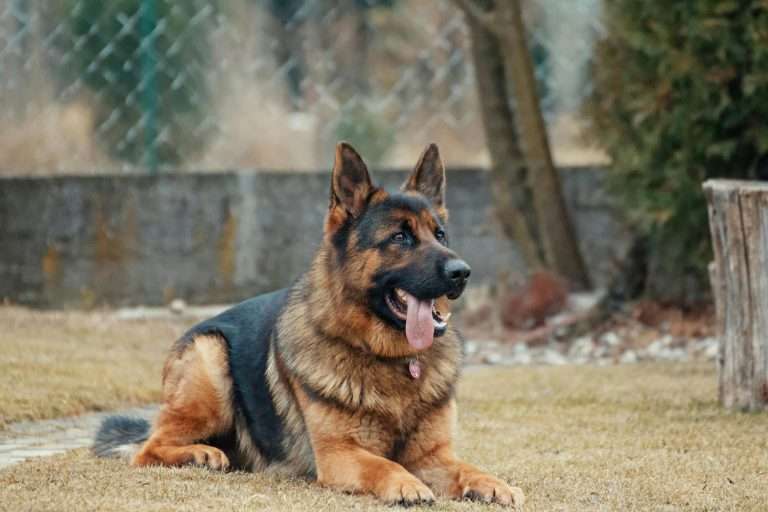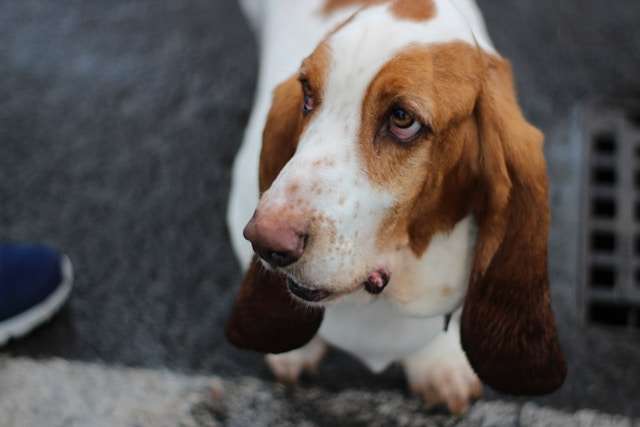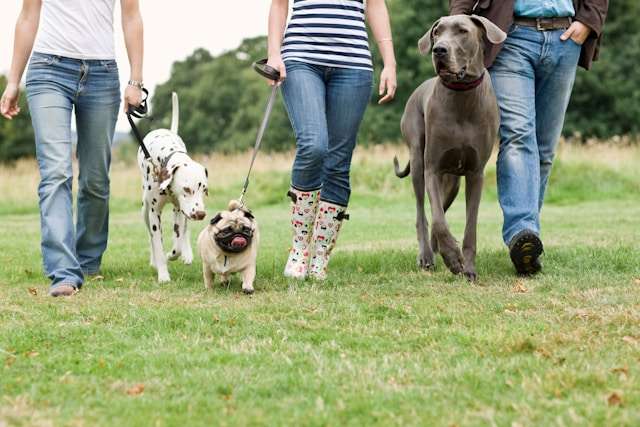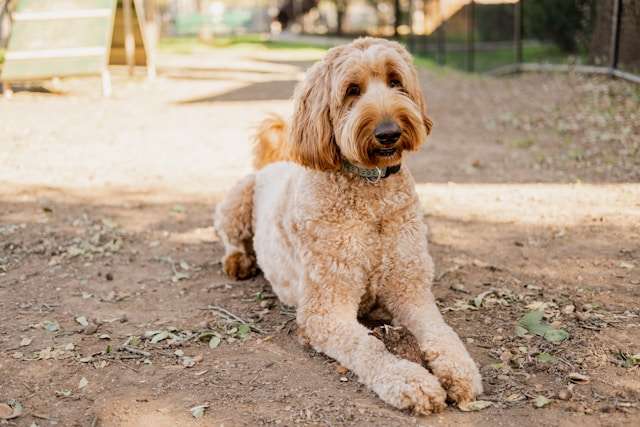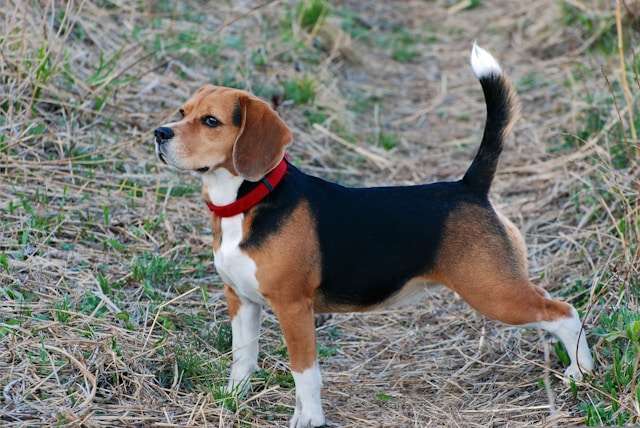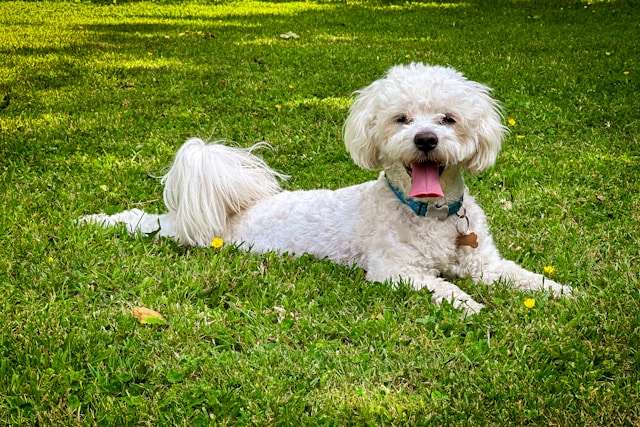Are Siberian Huskies Good Family Dogs? A Comprehensive Guide
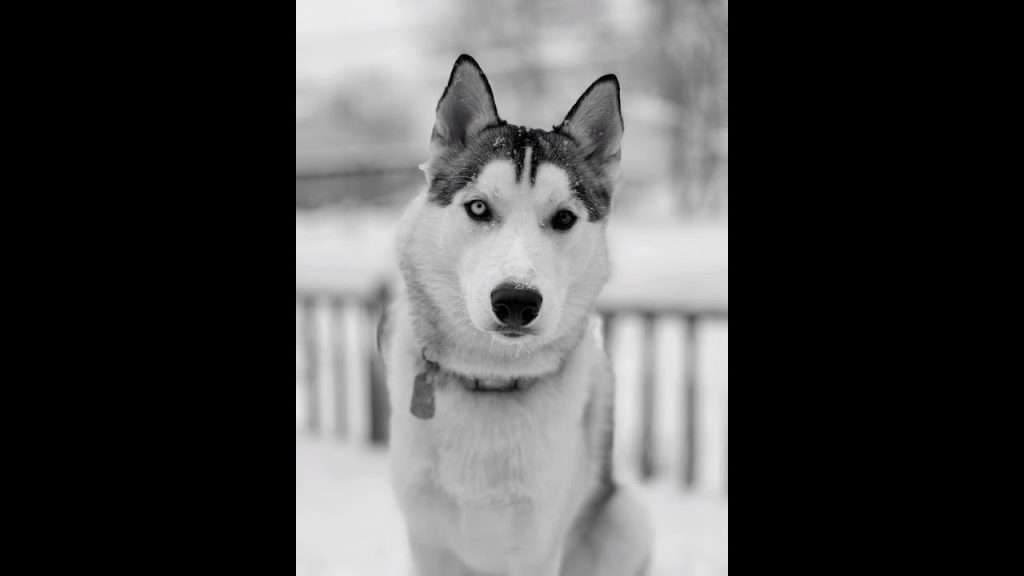
Are Siberian Huskies Good Family Dogs? A Comprehensive Guide Siberian Huskies captivate people with their wolf-like appearance and striking blue eyes. These beautiful dogs combine energy and charisma, but potential owners need to think about more than just their appealing looks.
Their unique temperament and behavior patterns set them apart from other family dogs. A Husky’s high energy, independent spirit, and special care needs could make them ideal companions or challenging pets based on your situation.
This detailed guide will help determine if a Siberian Husky fits your family’s lifestyle. It provides essential information about their exercise requirements, training challenges, interaction with children, and long-term care needs.
Table of Contents
Understanding Siberian Husky Temperament
Understanding a Siberian Husky’s unique temperament is vital to deciding if they suit your family. These magnificent dogs have complex personalities that make them different from other breeds.
Natural personality traits
Your Husky will display an intelligent, independent, and somewhat stubborn nature 1. These dogs are prominent for their mischievous and playful personality. They often show great humor that can delight and challenge you 2. They’re not typical barkers, yet they’re nowhere near quiet. You’ll hear a variety of distinctive “woos,” chirps, and howls that create their unique vocal repertoire 1.
A Siberian Husky’s defining personality traits include:
- Sharp intelligence with an independent mind
- Playful and mischievous spirit
- Strong will mixed with stubbornness
- Active and energetic nature
- Free spirit with adventure in their blood
Social behavior with family members
These dogs flourish with human companionship and love being part of the family 2. Their naturally friendly and outgoing nature makes them poor guard dogs but excellent companions 3. Their strong-willed personality means they need firm, gentle training from an early age 4.
Huskies love their family time but won’t be overly possessive or wary of strangers 3. This welcoming nature makes them great with house guests. You must establish clear leadership because they respond well to consistent, fair handling 2.
Interaction with other pets
Siberian Huskies usually get along well with other dogs, especially those they grow up with 4. Their strong prey drive needs careful attention if you have smaller pets. Without proper socialization, they might chase cats and other small animals 4.
Early socialization starts at 4 weeks old and helps create prosperous multi-pet households 5. You should be extra careful about introducing your Husky to smaller pets. Use positive reinforcement and controlled environments for these introductions 6. Even if a Husky accepts one cat as part of their pack, they might not be as friendly with all small animals 5.
Daily Care and Exercise Requirements
A Siberian Husky’s boundless energy demands an active lifestyle from its owners. Proper daily care is essential for their physical and mental well-being.
Physical exercise needs
Your Husky requires a minimum of two hours of exercise every day 7. A simple walk around the block won’t suffice – these natural endurance runners need vigorous activity. Your Husky’s optimal health requires three to five miles of exercise at least four days a week 8.
Key exercise activities for your Husky:
- Daily jogging or running sessions
- Hiking adventures
- Agility training
- Skijoring (in winter)
- Supervised play in a secure area
Summer months require extra caution because your Husky’s thick coat makes them prone to overheating. Signs of overheating include excessive panting, bright red tongue, and thick saliva 8. Plan exercise sessions during more excellent hours and make fresh water readily available.
Mental stimulation activities
Your Husky needs more than physical exercise – mental stimulation plays a vital role 9. These intelligent dogs need challenging activities to avoid boredom and destructive behavior.
Interactive games like hide-and-seek with treats, puzzle toys, and training sessions help keep your Husky’s mind sharp 10. These activities challenge their intellect and strengthen their bond with them.
Space requirements
Huskies need more than a small backyard. The outdoor area must have secure high fences 7. These skilled escape artists can jump over tall barriers and dig their way out 9.
Huskies can adapt to apartment living if they get enough outdoor activity and mental stimulation 9. Limited space and activity might lead to boredom, resulting in damaged furniture or escape attempts 7.
A large yard alone won’t meet your Husky’s needs – they thrive on active engagement and supervision. Extended periods of solitude can lead to destructive behavior 7. Your yard should include designated play areas where your Husky can explore and exercise safely under your watchful eye.
Training Challenges and Solutions
Siberian Huskies need patience, consistency, and a deep understanding of their unique personality traits. These intelligent but independent dogs create distinct training challenges you must direct with care.
Simple obedience training
Your Husky’s strong-willed nature demands firm but gentle training early on 11. These dogs respond exceptionally well to positive reinforcement techniques that use treats, praise, and play as motivation 11.
Essential training tips for your Husky:
- Start socialization between 3-16 weeks of age
- Use high-value treats as rewards
- Keep commands consistent among family members
- Make training sessions short and fun
- Practice in different settings to reinforce behaviors
Common behavioral issues
Your Husky might show several challenging behaviors that need specific training approaches. Excessive digging usually comes from boredom or attempts to cool down 12. You can solve this by creating a designated digging area and channeling their energy into appropriate activities 12.
Vocal expression is a trademark behavior—Huskies aren’t typical barkers, but they love to howl, especially when they feel lonely or anxious 13. The right amount of exercise and companionship helps reduce excessive vocalization.
Destructive chewing occurs often in puppies and requires quick action. To prevent this habit from forming, give them appropriate chew toys and watch them consistently. 12. Note that these behaviors come from their natural instincts and take time to address.
Professional training considerations
Your independent Husky might need professional help, especially if this is your first 14. Find trainers who know northern-breed dogs well since standard training methods don’t always work 14.
Professional training becomes vital if your Husky shows food aggression or other challenging behaviors 15. A qualified trainer helps you become a leader, which is vital to successful Husky training 16.
Look for trainers who use positive reinforcement methods because Huskies don’t respond well to harsh corrections 11. The proper professional develops a training program that works with your Husky’s instincts instead of fighting against them 14.
Family Lifestyle Compatibility
Before bringing a Siberian Husky into your family, you should review your lifestyle’s compatibility with this high-maintenance breed. Understanding time and financial commitments will help you become a responsible Husky owner.
Time commitment requirements
A Husky becomes part of your family for up to 15 years 17. These dogs need daily attention, especially during their puppy years. You must set aside time to house-train them, teach simple manners, and prevent destructive behaviors 17.
Your Husky needs constant attention throughout its life. This makes it a poor choice for families that stay away from home for long hours. Puppies require an extensive time investment for training, socialization, and daily routines 17.
Financial Considerations
Husky ownership costs typically range from $150 to $1,245 monthly 18. Here’s what your budget should include:
- Regular expenses:
Extra costs might include doggy daycare ($140-460 monthly), dog sitting ($250-375 weekly), or professional dog walking services ($140-280 weekly) 19.
Work-life balance effect
Special arrangements become necessary for your Husky’s care if you work a typical 9-to-5 job. These social animals struggle with long periods of isolation 20. Here are some options:
- Hire a dog walker for midday exercise
- Enroll in doggy daycare services
- Ask a family member to provide companionship
- Create a secure outdoor space with proper supervision
Families with full-time jobs should look into adopting an older, trained Husky instead of a puppy. Mature dogs usually have established routines and lower energy levels 17. Leaving your Husky alone outdoors during work hours can lead to escape attempts, excessive barking, or destructive behaviors 20.
Your Husky’s needs will significantly affect your daily schedule, vacation planning, and overall lifestyle. They flourish in homes where at least one family member can dedicate substantial time to their care and exercise needs 20. The commitment might seem huge, but proper planning and resource allocation can create harmony between your work life and pet care duties.
Child Safety and Interaction
When you bring a Siberian Husky into a home with children, your family’s safety comes first. These magnificent dogs build wonderful bonds with kids. Proper guidelines and supervision are needed to create a safe, harmonious relationship.
Age-appropriate guidelines
Your husky’s interaction with children should adapt to their ages. You must stay extra vigilant with infants and toddlers under four years old. Huskies might not naturally know how to behave around such young children 21. These energetic dogs could accidentally knock small children down during play 22.
Children over four can have more direct interactions with your husky, but always under watchful eyes. Your husky will likely match your child’s energy levels naturally. They stay calmer with quieter children and become more playful with energetic ones 21.
Supervision requirements
Your children should never be alone with your husky, whatever your dog’s training level or gentle nature 23. This rule becomes vital for:
- Children under two years of age (constant supervision required)
- Playtime sessions
- Feeding times
- Times when new children visit your home
Your husky needs safe spaces to retreat when they need breaks from children’s activities 24. These could include:
- A designated crate or bed
- A separate room with a baby gate
- A quiet corner away from traffic
Teaching children proper interaction
Children must learn the proper ways to interact with their husky. These vital guidelines will help:
- No pulling on ears, tail, or fur
- Never disturb a sleeping or eating dog
- Avoid sudden movements or loud noises
- Respect the dog’s personal space
- No riding or climbing on the dog 23
Help your children understand dog body language 22. This knowledge helps them spot when your husky needs space or feels uncomfortable. A new baby on the way requires preparing your husky by:
- Gradually reducing attention levels
- Introducing baby-related sounds and scents
- Setting new boundaries around the nursery area 21
The integration works best with controlled introduction sessions where another adult helps supervise 22. This extra support helps your children and husky learn safe interactions while building positive relationships. Huskies show great synergy with children’s energy levels, but proper training and consistent supervision remain the foundations of safe interactions 21.
Health Management for Family Huskies
Your Siberian Husky needs proactive health care and a good grasp of breed-specific conditions. Dedication to regular healthcare will affect your husky’s quality of life and longevity.
Regular veterinary care
Your husky needs yearly check-ups, vaccinations, and regular flea and worming treatments 7. A veterinary health care plan helps spread costs throughout the year 7. These visits help catch problems early, especially when you have breed-specific conditions.
Your husky needs these vital check-ups:
- Annual physical examination
- Eye screenings by veterinary ophthalmologists
- Hip evaluation
- Thyroid function tests
- Dental check-ups
Common health issues
Siberian Huskies are healthy dogs but can develop certain conditions you should watch for. Hip dysplasia tops the list of orthopedic issues. This condition prevents proper hip joint development and can lead to arthritis 25.
Your husky might develop these eye conditions:
- Cataracts – affecting about 10% of the breed 26
- Progressive Retinal Atrophy (PRA)
- Corneal dystrophy
- Glaucoma – yearly screening needed 7
Keep an eye out for these health issues:
- Hypothyroidism – affects metabolism and needs lifelong treatment 25
- Zinc-responsive dermatosis – causes skin problems 25
- Epilepsy 7
- Certain cancers 7
Preventive care measures
Get regular screenings through the BVA/Kennel Club Hip Dysplasia Scheme 7. Your husky’s eyes need yearly check-ups to spot and manage conditions like cataracts early 7.
Here’s what you need to do:
- Dental Care: Brush teeth often to prevent periodontal disease
- Skin Care: Look for zinc deficiency signs and groom properly
- Weight Management: Stop obesity-related health issues before they start
- Parasite Prevention: Keep up with flea, tick, and heartworm treatments 27
- Vaccination Schedule: Stay current with core and lifestyle-based vaccines
Pet insurance helps manage unexpected vet costs. Bills can add up fast without coverage 7. Look closely at what each policy covers, especially breed-specific issues.
Watch your husky for these warning signs:
- Changes in walking or trouble getting up (hip problems)
- Cloudy eyes or vision changes (eye conditions)
- Skin issues or coat changes (dermatological problems)
- Weight gain or low energy (thyroid issues)
Note that finding problems early leads to better outcomes and budget-friendly treatment options. Your vet can help create a detailed healthcare plan that fits your husky’s needs and risk factors.
Conclusion
Siberian Huskies make lovely family companions in suitable homes. Their playful nature, intelligence, and striking appearance bring essential responsibilities that need careful thought.
A happy life with a Husky depends on how well you match their needs with your lifestyle. These dogs need dedicated daily exercise, consistent training, proper socialization, and careful health monitoring. Your success depends on a secure yard, plenty of family time, and resources for professional support to raise a happy, well-adjusted Husky.
Note that Huskies can adapt to living situations of all types. They excel in active households where family members can dedicate time to their physical and mental stimulation. Their high energy levels, strong prey drive, and independent nature mean they’re not the ideal choice for every family.
Before bringing a Husky home, you should review if you can provide the extensive exercise, training, and healthcare they need throughout their 12-15-year lifespan. These magnificent dogs reward their families with loyalty, affection, and countless memorable moments that make the extra effort worthwhile at the time they receive proper care.
FAQs
- Are Siberian Huskies suitable as family pets? Siberian Huskies can make excellent family pets when properly trained and socialized. They are known for their friendly nature towards people, including children, and can get along well with other dogs. However, they require a significant time commitment, consistent training, and plenty of exercise to thrive in a family environment.
- What are the main challenges of owning a Siberian Husky? The main difficulties of owning a Siberian Husky include their high exercise needs (requiring at least two hours of vigorous activity daily), the potential for separation anxiety when left alone, strong prey drive that may be problematic with smaller pets, and their tendency to be escape artists. They also require consistent training due to their independent and sometimes stubborn nature.
- How much exercise does a Siberian Husky need? Siberian Huskies need a minimum of two hours of exercise every day. This should include vigorous running, hiking, or intense play sessions. Ideally, they should get three to five miles of exercise at least four days a week to maintain their physical and mental well-being.
- Are Siberian Huskies good with children? Generally, Siberian Huskies are good with children, significantly when raised together. They often adapt their energy levels to match a child’s temperament. However, supervision is always necessary, particularly with younger children, as Huskies’ playful nature might accidentally knock over small kids. It’s crucial to teach children how to interact safely with the dog.
- What are the grooming requirements for a Siberian Husky? Siberian Huskies have a thick double coat that sheds heavily, especially during shedding seasons. They require regular brushing, at least a few times a week and daily during shedding periods. Professional grooming sessions, costing around $75-90 per session, may be necessary. Despite their thick coat, Huskies are generally clean dogs and don’t need frequent baths.
- Can Siberian Huskies live in apartments? While Siberian Huskies can adapt to apartment living, it’s not ideal unless the owner can provide ample daily exercise and mental stimulation. They need secure outdoor spaces to run and play. Living in an apartment with a Husky requires a significant commitment to daily outdoor activities and may necessitate services like dog walking or daycare when the owner is away.
- What are common health issues in Siberian Huskies? Common health issues in Siberian Huskies include hip dysplasia, eye problems (such as cataracts and progressive retinal atrophy), hypothyroidism, and zinc-responsive dermatosis. They may also be prone to certain types of cancer. Regular veterinary check-ups, including eye screenings and hip evaluations, are essential for maintaining their health.
- How much does it cost to own a Siberian Husky? The monthly cost can range from $150 to $1,245. This includes expenses for food, veterinary care, grooming, and potential services like dog walking or daycare. Initial costs and annual expenses for preventive care should also be considered. Pet insurance, which can cost $30 or more per month, is recommended to help manage unexpected veterinary expenses.
- Are Siberian Huskies easy to train? Siberian Huskies are intelligent but can be challenging to train due to their independent and sometimes stubborn nature. They respond best to positive reinforcement techniques using treats, praise, and play as motivation. Consistency, patience, and early socialization are essential to successful training. Professional training assistance may be beneficial, especially for first-time Husky owners.
- How do Siberian Huskies behave with other pets? Siberian Huskies get along well with other dogs, significantly if raised together. However, their strong prey drive can make them a risk to smaller pets like cats, rabbits, or birds. Early socialization and careful introductions are crucial when introducing a Husky to a household with smaller animals. Supervision is always recommended, even with pets they’re familiar with.
References
[1] – https://www.britannica.com/animal/Siberian-husky
[2] – https://www.petplan.co.uk/pet-information/dog/breed/husky/
[3] – https://alleysrescuedangels.org/learn/siberian-husky-temperment.html
[4] – https://www.hillspet.com/dog-care/dog-breeds/siberian-husky
[5] – https://bamahuskies.com/socializing-your-husky-with-other-dogs/
[6] – https://wagwalking.com/training/train-a-husky-to-get-along-with-other-dogs
[7] – https://www.pdsa.org.uk/pet-help-and-advice/looking-after-your-pet/puppies-dogs/large-dogs/siberian-husky
[8] – https://www.huskyhavenfl.org/exercise
[9] – https://www.thefarmersdog.com/digest/the-husky-care-guide-food-exercise-personality-and-more/
[10] – https://www.husky-owners.com/topic/17952-games-for-mental-stimulation/
[11] – https://www.petplay.com/blogs/tips/training-a-siberian-husky-dogtips-and-techniques-for-a-happy-and-well-behaved-companion?srsltid=AfmBOoowR9oH9HLt3A8x1Trf-3b1cPQfWHF32LRIjLX9v9rG4uEM0ctP
[12] – https://www.petplay.com/blogs/tips/training-a-siberian-husky-dogtips-and-techniques-for-a-happy-and-well-behaved-companion?srsltid=AfmBOorXfSd0EBhtgpQ9pkcJ2wSZ4wRciardsWDCxGSQvPHJwlF2v8bQ
[13] – https://be.chewy.com/behavior-of-your-siberian-husky/
[14] – https://www.shca.org/training-and-behavior-resources-rescues
[15] – https://primitivedogs.com/correct-husky-behavior-issues/
[16] – https://www.snowdog.guru/the-jealous-over-protective-and-possessive-husky/
[17] – https://www.siberianhuskyrescue.org/are-you-ready-to-adopt/
[18] – https://www.dogster.com/dog-breeds/how-much-does-a-husky-cost
[19] – https://wagwalking.com/wellness/how-expensive-is-it-to-own-a-husky
[20] – https://www.quora.com/Is-it-bad-to-leave-your-husky-outside-all-day-while-youre-at-work
[21] – https://stayyy.com/are-huskies-good-with-kids/
[22] – https://www.dogster.com/dog-breeds/are-huskies-good-with-kids
[23] – https://nativepet.com/blogs/health/are-huskies-good-with-kids?srsltid=AfmBOopNbMSxmFcvD_Bclvc_Kvl9x5geHPh6w4GCbL_t8lJSVAVtNjhs
[24] – https://www.dailypaws.com/living-with-pets/pet-compatibility/are-huskies-good-with-kids
[25] – https://www.dogbizness.com.au/post/title-siberian-husky-health-common-concerns-and-care-guidelines
[26] – https://canna-pet.com/articles/siberian-husky-health-problems-issues/
[27] – https://eatneobites.com/blogs/dog-health-and-nutrition/health-and-wellness-for-siberian-huskies?srsltid=AfmBOoqalO8tYuP8hXK0HKqk8ZWgB76wfBjUzyffUetmtNDoivwCdJ5Z


